- Clinical Technology
- Adult Immunization
- Hepatology
- Pediatric Immunization
- Screening
- Psychiatry
- Allergy
- Women's Health
- Cardiology
- Pediatrics
- Dermatology
- Endocrinology
- Pain Management
- Gastroenterology
- Infectious Disease
- Obesity Medicine
- Rheumatology
- Nephrology
- Neurology
- Pulmonology
Skin Disorders in Older Adults: Vascular, Lymphatic, and Purpuric Dermatitides, Part 2
All elements of the skin are affected by age. In this 2-part article, I discuss how the blood vessels, the lymphatics, and the ground substance- which surrounds these vessels- respond to age, and I show how the aging elements of the vasculature can engender a variety of pathological cutaneous conditions.
ABSTRACT: Age-related changes in the lymph and blood vessels contribute to the development of elephantiasis nostrum verrucosa, lipodermatosclerosis, atrophie blanche, and leukocytoclastic vasculitis. The reasons behind the increased incidence of giant cell arteritis in elderly persons remain unclear. Pyogenic granulomas are not common in older adults. However, because amelanotic melanoma and Kaposi sarcoma can mimic these benign vascular lesions, consider biopsy for any friable lesion or bleeding papule or nodule that appears in an elderly person.
All elements of the skin are affected by age. In this 2-part article, I discuss how the blood vessels, the lymphatics and the ground substance-which surrounds these vessels-respond to age, and I show how the aging elements of the vasculature can engender a variety of pathological cutaneous conditions.
Here I focus on elephantiasis nostrum verrucosa, lipodermatosclerosis, atrophie blanche, pyogenic granuloma, giant cell arteritis, and leukocytoclastic vasculitis. In Part 1, I discussed solar purpura, benign pigmented purpura, cherry angiomas, venous lakes, varicose veins, and spider telangiectasia.
ELEPHANTIASIS NOSTRUM VERRUCOSA
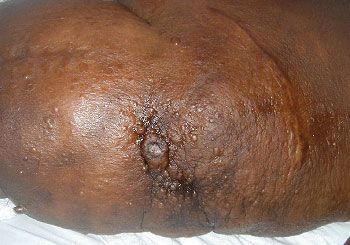
Figure 1 – Elephantiasis nostrum verrucosa can involve the entire leg, as in this patient.
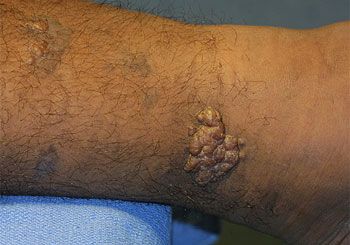
Figure 2 – The nodules on this man’s leg represent elephantiasis nostrum verrucosa.

Figure 3 – Elephantiasis nostrum verrucosa can manifest as a pebble-surfaced plaque, as in this patient.
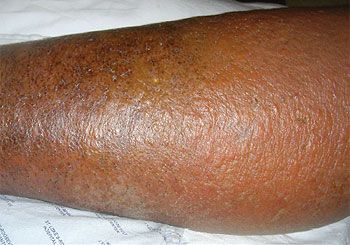
Figure 4 – The skin of this woman with lipodermatosclerosis appears lichenified and reddish brown because of the deposition of hemosiderin from red blood cells.
Elephantiasis nostrum verrucosa (ENV) is a rare, progressively deformative lymphedematous disorder that is also called chronic lymphedema, elephant skin, lymphangitis recurrens elephantica, or “mossy leg.” The disease is characterized by pronounced nonpitting edema with generalized lichenification, hyperkeratotic papules and nodules, and verrucous cobblestonelike plaques. ENV can involve the entire leg (Figure 1), or it can manifest as a discrete nodule (Figure 2) or a flat or pebble-surfaced plaque (Figure 3).
Although ENV resembles the traditional “elephantiasis” caused by the helminthic Wuchereria species, it represents a distinct entity not associated with filarial disease. ENV and traditional elephantiasis are both marked by impaired lymphatic drainage, which results in excess accumulation of interstitial fluid. Untreated ENV eventuates in pain and immobility.
Initial management of ENV of the lower extremities consists of prophylactic anti-streptococcal antibiotics, compression, and elevation, followed by pneumatic pump compression. These treatments, however, are obviously not appropriate for all regions of the body. Extensive ENV is very difficult to manage. A mainstay of treatment is weight loss.
If medical therapy is not effective, surgical measures include lymphovenous and lymphatic anastomosis as well as lymphatic transplantation. Amputation of the extremity is a last resort.
LIPODERMATOSCLEROSIS
Lipodermatosclerosis is a term that describes changes in the leg caused by capillary proliferation, fat necrosis, and fibrosis of skin and subcutaneous tissues; these changes give the leg the clinical appearance of an “apple core” or “inverted champagne bottle.” Lipodermatosclerosis is associated with vascular insufficiency and stasis dermatitis. The affected skin is indurated and firm to the touch; it also appears lichenified and reddish or brown because of the deposition of hemosiderin from red blood cells (Figure 4). The differential diagnosis includes other forms of mixed septal and lobular panniculitis, including factitial causes.
Histological examination reveals adipocytes of variable size in the subcutaneous fat, including microcysts with thickened, eosinophilic walls. Fibrosis and a mild lymphocytic infiltrate are also evident. Direct immunofluorescence studies of early and late lesions show dermal pericapillary fibrin deposits without other immunoreactants.
Lipodermatosclerosis has also been called hypodermitis sclerodermiformis and sclerosing panniculitis. Confusion about the nature, clinical course, and treatment of lipodermatosclerosis exists. Some believe that lipodermatosclerosis has an acute inflammatory phase and a chronic fibrotic stage; others consider it to be a panniculitis.1,2
Treatment of lipodermatosclerosis consists of compression therapy with either graded stockings or elastic bandages. The anabolic steroid stanozolol can soften the skin and ameliorate any associated pain.
ATROPHIE BLANCHE
Atrophie blanche is a type of scar that arises on the lower leg. It occurs after a skin injury in persons with vascular insufficiency. Initially, petechial or purpuric papules or hemorrhagic bullae develop at the site of an injury; these become necrotic and form ulcers. In time, atrophie blanche appears as a star-shaped or polyangular, ivory-white depressed atrophic plaque (Figure 5). Sometimes prominent petechiae are present within the scar as a result of enlarged capillary blood vessels, and there may be an increase in surrounding pigmentation. Single or multiple depressed plaques may occur.
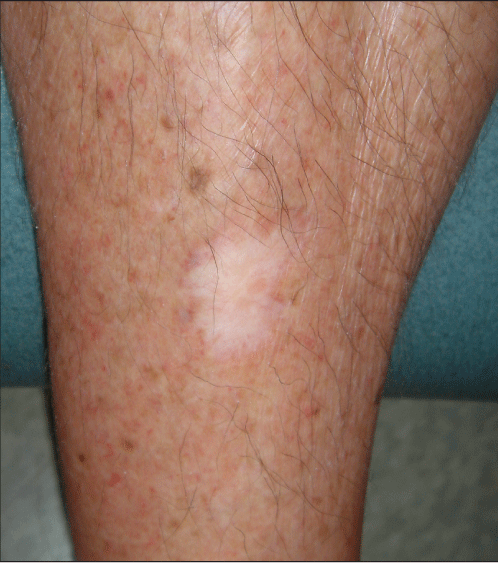
Figure 5 – The white plaque on this man's leg is atrophie blanche, a type of scar that occurs in persons with vascular insufficiency.
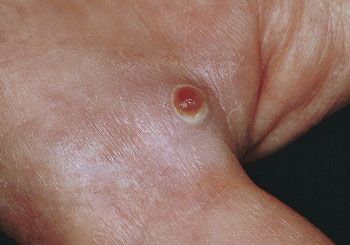
Figure 6 – This red papule is a pyogenic granuloma, which developed at the base of a woman’s thumb. The lesion was treated definitively with surgical excision, and the biopsy results confirmed the clinical diagnosis. (Courtesy of Reynold C. Wong, MD.)
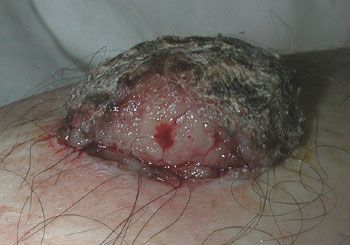
Figure 7 – This nodule on a man’s leg is an amelanotic melanoma, which can masquerade as pyogenic granuloma.
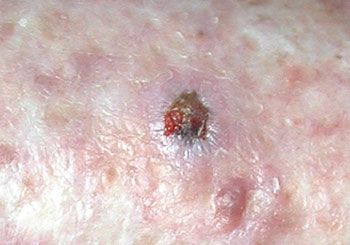
Figure 8 – Biopsy results revealed that this lesion was Kaposi sarcoma, which can mimic pyogenic granuloma.
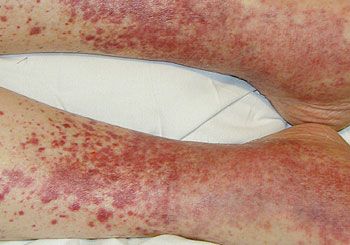
Figure 9 – Palpable purpura and petechiae on this woman’s lower legs are manifestations of leukocytoclastic vasculitis.
Atrophie blanche can occur in association with or follow Raynaud phenomenon, livedoid vasculitis, livedo reticularis before ulceration, venous insufficiency, and diabetic vascular disease. The incidence increases with age and with the presence of comorbid conditions such as diabetes and vascular insufficiency. Atrophie blanche is thought to result from an underlying vasculitis or coagulopathy.
Systemic therapy for idiopathic atrophie blanche is aimed at correcting the coagulopathic state. Antithrombotic agents and pentoxifylline have been moderately effective in this setting and are the currently favored drugs. Improvement is usually seen within 1 month after therapy is started.
Low-dose aspirin and dipyridamole are the most common antithrombotic agents used. They are generally well tolerated and have minimal side effects. Pentoxifylline acts by increasing deformity of erythrocytes, thereby improving blood flow to ischemic tissues to promote healing. I prefer to use triple therapy with pentoxifylline, 400 mg tid; aspirin, 81 mg/d; and dipyridamole, 75 to 100 mg qid.
PYOGENIC GRANULOMA
Pyogenic granuloma is an aggregation of blood vessels that forms a papule or nodule (Figure 6). It initially appears as a friable or glistening red papule that bleeds, sometimes with erosion, ulceration, and crusting. Pyogenic granulomas can grow rapidly and range in size from a few millimeters to several centimeters. They can be polypoid or pedunculated.
Pyogenic granulomas are not common in older adults. However, because amelanotic melanoma (Figure 7) and Kaposi sarcoma (Figure 8) can mimic pyogenic granuloma, I biopsy any friable lesion or bleeding papule or nodule that appears in an elderly person and send the sample for histological examination by a dermatopathologist.
GIANT CELL ARTERITIS
Giant cell arteritis usually occurs in persons older than 50 years; the incidence increases with age and peaks in persons in their 80s. This systemic inflammatory vasculitis of unknown origin affects medium-sized and large arteries and has a wide variety of systemic, neurological, and ophthalmological complications.
From a dermatological standpoint, giant cell arteritis can manifest as a prominent blood vessel in the temporal area. In addition, scalp necrosis and ulceration can occur. Giant cell arteritis masquerading as squamous cell carcinoma of the skin has been reported.3
As many as 60% of patients with giant cell arteritis have permanent visual impairment, including blindness. Prompt treatment with corticosteroids can prevent this complication and other sequelae.4
Localized headache of new onset is the portent of giant cell arteritis; the pain usually is localized to the temporal or occipital area or less commonly is diffuse or bilateral. Scalp tenderness may accompany the headache, especially over the temporal region. The tenderness often can be induced by merely very gentle pressure. Other cranial symptoms include temporal tenderness or pulselessness, jaw claudication, facial pain, earache, toothache, tongue and palate pain, and odynophagia.
LEUKOCYTOCLASTIC VASCULITIS
Leukocytoclastic vasculitis (LCV) is a histopathological term commonly used to denote a small-vessel vasculitis. It manifests as palpable purpura and petechiae, most often on the lower leg (Figure 9). This type 3 hypersensitivity reaction involves immune complexes.
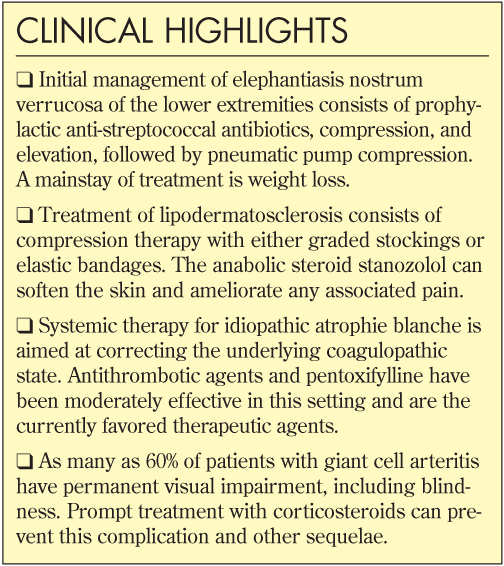
Infections and medications are most frequently implicated in the development of LCV, although a cause is not found in as many as 50% of patients.5 Because elderly persons typically take multiple medications, a drug reaction is often suspected. However, keep in mind the association of LCV with infection. If a patient appears to have LCV, a search for an underlying infection such as hepatitis or streptococcal infection may be warranted.
A skin biopsy can rule out other conditions. LCV can resemble Henoch-Schnlein purpura (HSP), which has numerous complications. If suggestive findings (eg, arthralgia, abdominal pain, low-grade fever) accompany the rash, rule out HSP with appropriate testing. LCV usually does not require treatment.
References:
REFERENCES:
1.
Bruce AJ, Bennett DD, Lohse CM, et al. Lipodermatosclerosis: review of cases evaluated at Mayo Clinic.
J Am Acad Dermatol
. 2002;46:187-192.
2.
Kirsner RS, Pardes JB, Eaglstein WH, Falanga V. The clinical spectrum of lipodermatosclerosis.
J Am Acad Dermatol
. 1993;28:623-627.
3.
Assi A, Nischal KK, Uddin J, Thyveetil MD. Giant cell arteritis masquerading as squamous cell carcinoma of the skin.
Br J Rheumatol
. 1997;36:1023-1025.
4.
González-Gay MA, GarcÃa-Porrúa C, Llorca J, et al. Visual manifestations of giant cell arteritis. Trends and clinical spectrum in 161 patients.
Medicine (Baltimore).
2000;79:283-292.
5.
Carlson JA, Cavaliere LF, Grant Kels JM. Cutaneous vasculitis: diagnosis and management.
Clin Dermatol
. 2006;24:414-429.
